Ribes sanguineum var. glutinosum (Pink-flowered currant) on 21 March 2015
The wildlife beat me to these every year.
"More than YOU want to know?
This lichenized moss is here year-round. These images are from several days ago (Spring 2015).
Lichen can use algae, some bacteria or even moss as their photobiont.
Many people like to think of lichens as a symbiotic relationship but if they look deeper they will discover that the fungus is “symbiotic” with its photobiont in the same way a rancher is symbiotic with their livestock. Except perhaps most ranchers feed their animals better.
This is also known as the almond-scented millipede due to it producing hydrogen cyanide as a defensive aid.
The roughness on the surface of this first animal is just tiny dew drops.
This one from last year is either a juvenile or has just recently molted:
Below is the same one but under UV.
I first noticed a Harpaphe millipede on a dark night wandering around the forest looking for black-light friendly mushrooms. It was apparently sleeping as at first it appeared from a distance to be a cluster of blue bristles. As the light got closer it began to move. It seems clear that black-light bothers arthropods that fluoresce as they actively try to get away from it.
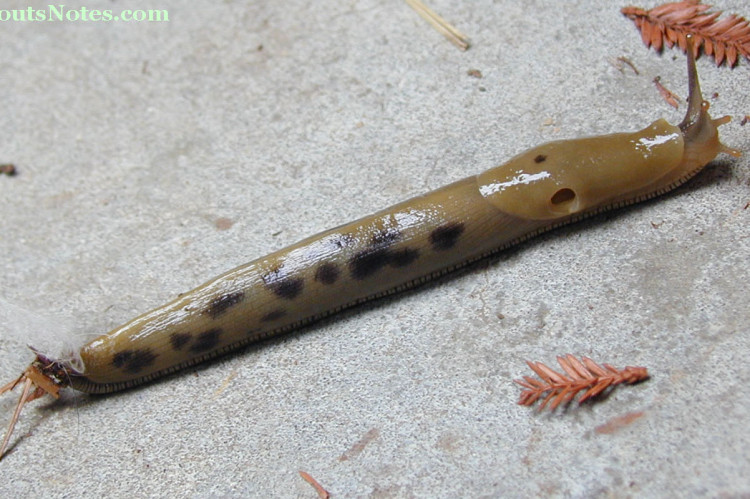
Monadenia infumata is considered to be an imperiled animal species.
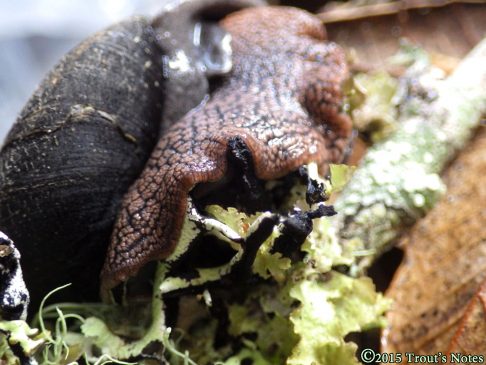
Redwood Sideband (Monadenia infumata) eating lichen.
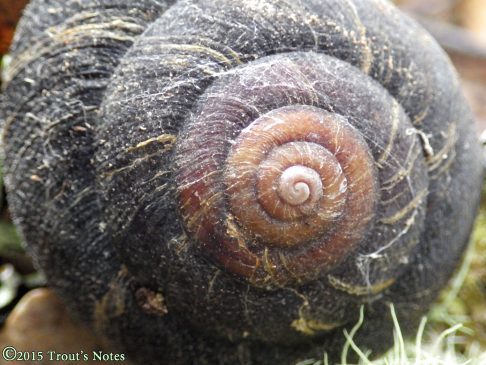
Redwood Sideband (Monadenia infumata)
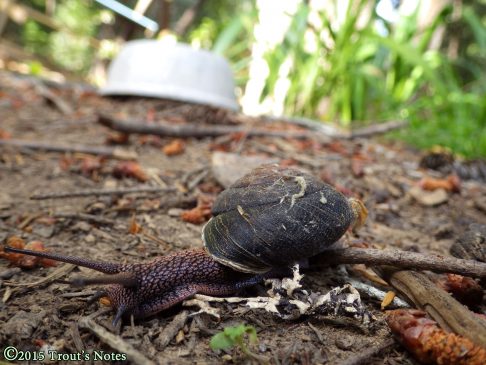
Redwood Sideband (Monadenia infumata)
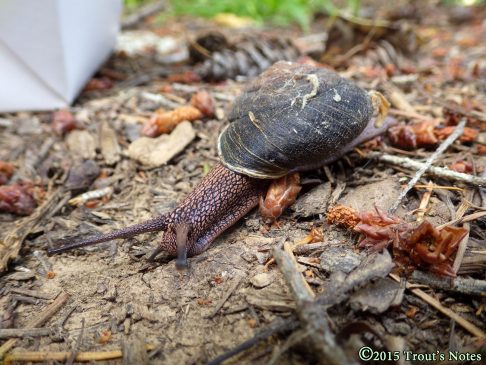
Redwood Sideband (Monadenia infumata)
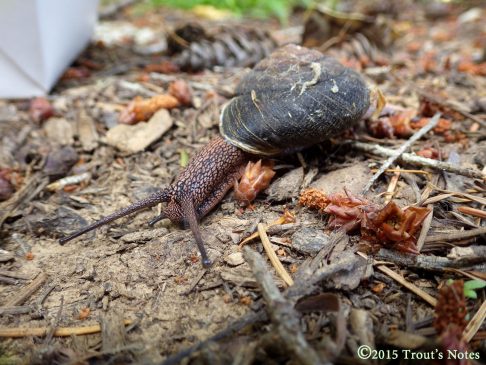
Redwood Sideband (Monadenia infumata)
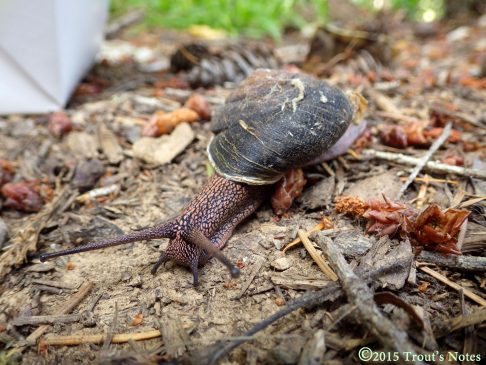
Redwood Sideband (Monadenia infumata)
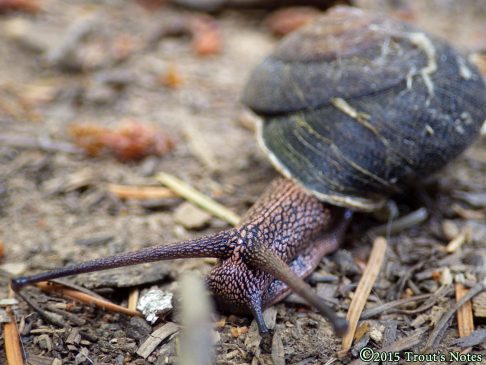
Redwood Sideband (Monadenia infumata)
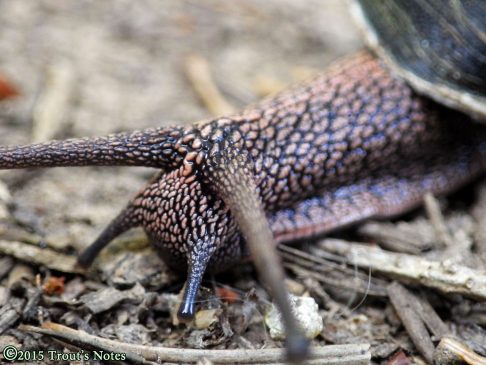
Redwood Sideband (Monadenia infumata)
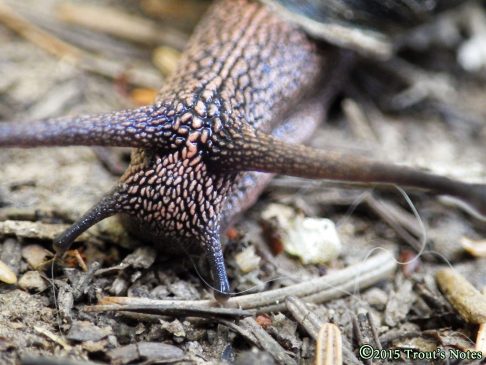
Redwood Sideband (Monadenia infumata)
Anagallis arvensis
Scarlet pimpernell
Regarded by some to be just another common weed yet meriting an old and enduring rhym
No heart can think, no tongue can tell,
The virtues of the pimpernell.
This species used to be highly valued as a medicinal plant but the saponins apparently make it toxic enough to be a potentially fatal choice of self-medication. I’ve been told by more than one herbalist that it fell out of use more than a century ago but I have not yet found actual details about when or why or how.
I would not suggest ingesting the plant but should comment that it has a strong weirdly prickly feeling taste.
While still in college, I read someplace, perhaps in Milspaugh’s work from the 1800s on medicinal plants, that the name anagallis meant inducing laughter.
Ingestion of the green plant material was said to cause a mild feeling in the chest and throat that purportedly resembled the onset of laughter. I might disagree with the latter analogy but it did produce a strange sensation in my upper chest when I tried it circa 1981. It was not unpleasant but, unlike laughter, there not much desire to repeat the experience.
Color reproduction of the flower color is inexplicably poor in these images. The flower on the upper left in the image above is, of those on this page, perhaps among the closest to being true.
Those purple spots under the leaves make this one easy to identify with certainty.
This used to be called the Pacific tree frog but someone sensibly decided that it was not an appropriate name since they do not live in trees. I’ve seen them use a puddle of water in the hollowed crotch of a tree branch for raising a crop of tadpoles but it is far more common to find them hanging out next to a clump of grass. This image shows what is the most probable place here to locate a singing frog.
The name Pacific chorus frog is much more appropriate as this animal may have the most commonly heard frog song in the entire world. Not due to being distributed worldwide but rather for sake of being chosen to be the “typical” sound of frogs used in movies, television and recordings wanting the sound of frogs singing in the background.
These frogs have a fascinating habit of not using permanent or flowing sources of water for egg laying. Instead they select temporary puddles and accumulations following rains. They manage to do this by maturing fast and really small; and then increasing substantially in size.
Every frog on this page is this species and was found within a couple of hundred meters of each other. Sizes are variable due to what was just mentioned. The color is chamaeleonoid in that the color changes between browns and greens. Unlike chamaeleons and anoles the color of these frogs does not change in response to their background changing but rather it is temperature dependent (so the frogs have to change their location to fit their color).
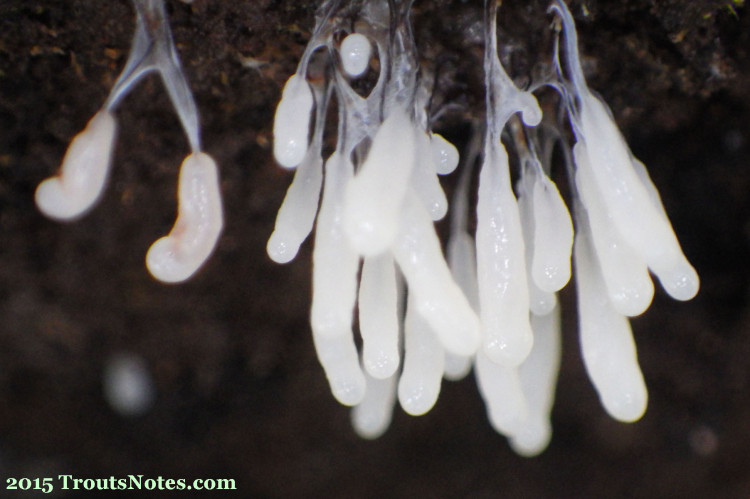
Trichocereus bridgesii purchased by someone at a Lumberjack store. Name was intended to be funny.
